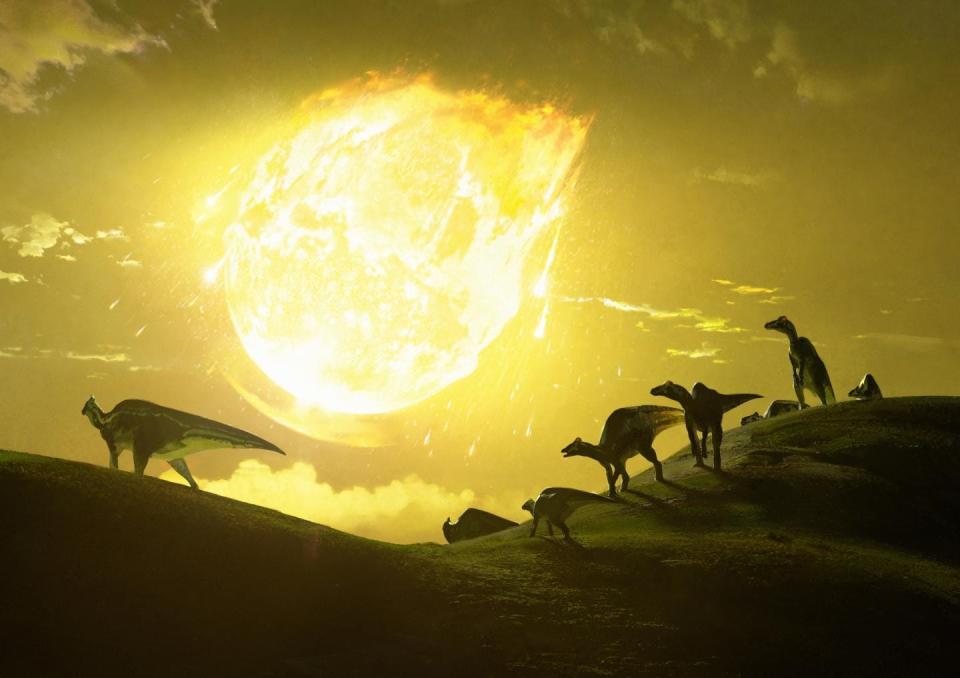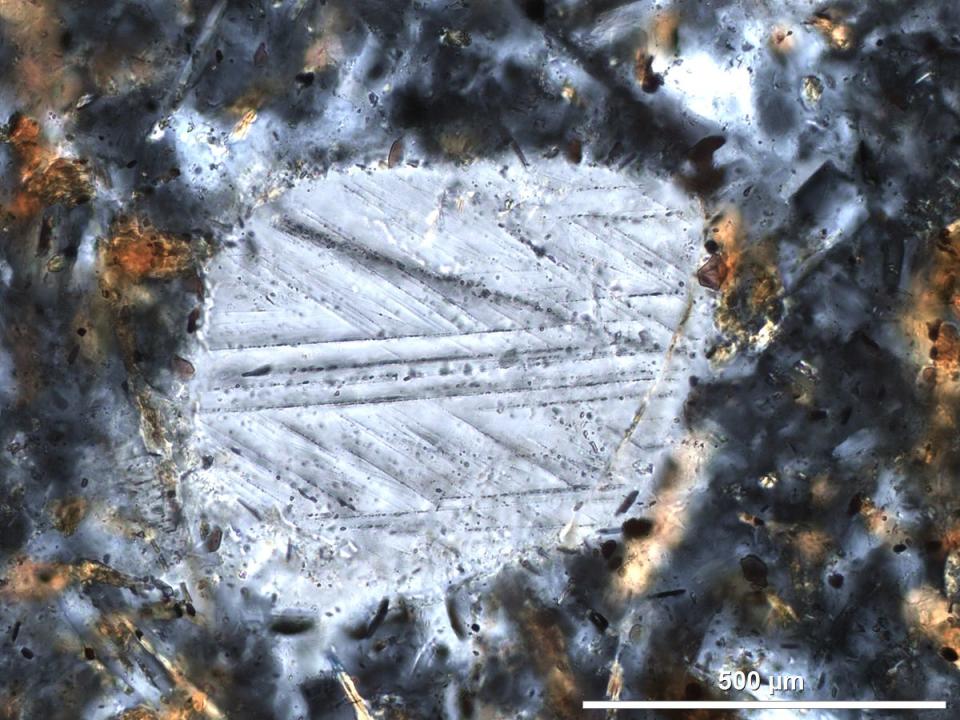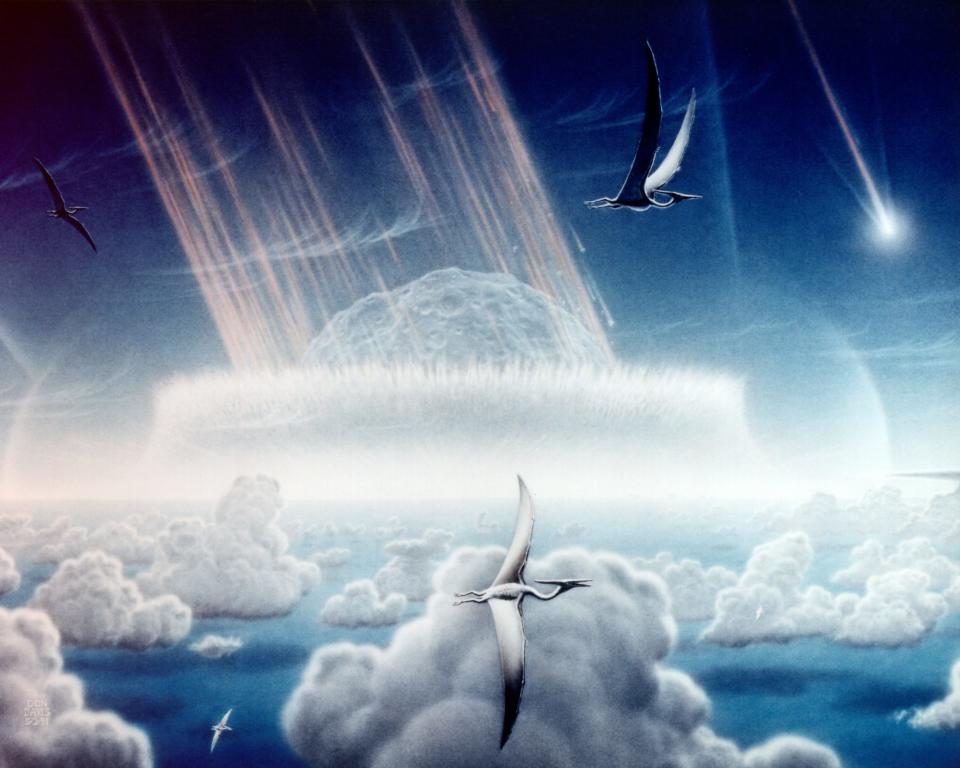A second space rock hit Earth after the one that doomed the dinosaurs - a nail in the coffin of the mass extinction

One space rock hit Mexico 66 million years ago, causing a mass extinction that doomed the dinosaurs.
A study suggests another asteroid struck Ukraine 650,000 years later, possibly warming the climate.
These back-to-back impacts may have delayed Earth's recovery from the mass extinction.
About 66 million years ago, Earth took a one-two punch, according to a new study.
First came a space rock 6-miles-wide that struck present-day Mexico. The impactor, named Chicxulub, contributed to the demise of the dinosaurs, along with 50% to 75% of life on Earth.
Then, 650,000 years later, a mile-sized asteroid known as Boltysh struck. The rock carved out a 15-mile-wide crater into what is now central Ukraine.
Scientists once thought both Boltysh and Chicxulub contributed to the mass extinction that doomed the dinosaurs. But according to the study published Friday in the journal Science Advances, Boltysh likely impacted Earth long after the last victims of the extinction died out.
"I believe the extinction was essentially done and dusted" by the time Boltysh hit, Annemarie Pickersgill, a researcher at the University of Glasgow who specializes in meteorite impacts and co-author of the new study, told Insider.
While it's unlikely Boltysh exacerbated the die-off, Pickersgill said the second impact may have delayed Earth's recovery from the catastrophic extinction.
Analyzing rocks that melted during the Boltysh impact

Scientists discovered the Boltysh impact in 2002, and an initial study suggested the asteroid had hit 2,000 to 5,000 years before Chicxulub did.
Pickersgill said that her team had intended to date the Boltysh crater with more precision, but she didn't expect their findings to upend previous research.
"I was surprised to find that the age for Boltysh was after Chicxulub," she said.
The researchers first analyzed two samples from deep within the crater, more than one-third of a mile underground. The heat from the asteroid impact had melted the rocks, so dating them allowed Pickersgill to piece together when Boltysh hit.
Then, the team looked at samples from a layer of sediment in Montana that coincided with the Chicxulub impact. Using radiometric dating - a technique that determines how long it takes for radioactive material in the rocks to decay - the team determined the Boltysh rocks melted about 650,000 years after Chicxulub struck.
Boltysh may have contributed to a burst of global warming

The updated age for the Boltysh crater coincides with a period of intense global warming known as the lower C29 hyperthermal, the study authors said.
During a hyperthermal event, which can last up to 40,000 years, average global temperatures can increase by 5.4 degrees Fahrenheit (3 degrees Celsius).
Pickersgill's team hasn't determined yet whether the asteroid caused the hyperthermal.
But she said there is evidence that suggests Chicxulub first cooled the Earth's climate, then warmed it.
When the dino-killing rock hit, it kicked up a cloud of dust, sulfur, and carbon dioxide into the atmosphere. That gaseous haze blocked the sun for a couple of decades, one study suggests, cooling the Earth.
During those few decades, most of Earth's land and marine species went extinct.
Eventually, the Chicxulub cloud dissipated and the remaining sulfur and carbon in the atmosphere - which trap heat on Earth's surface - started warming the planet.
But once Boltysh hit, that impact may have released additional gases into the air and exacerbated that warming. This could've made it more difficult for Earth's species to recover following the mass extinction.
Research suggests it took 9 million years for the number of different species in North America to return to pre-Chicxulub levels.
Read the original article on Business Insider

 money
money 